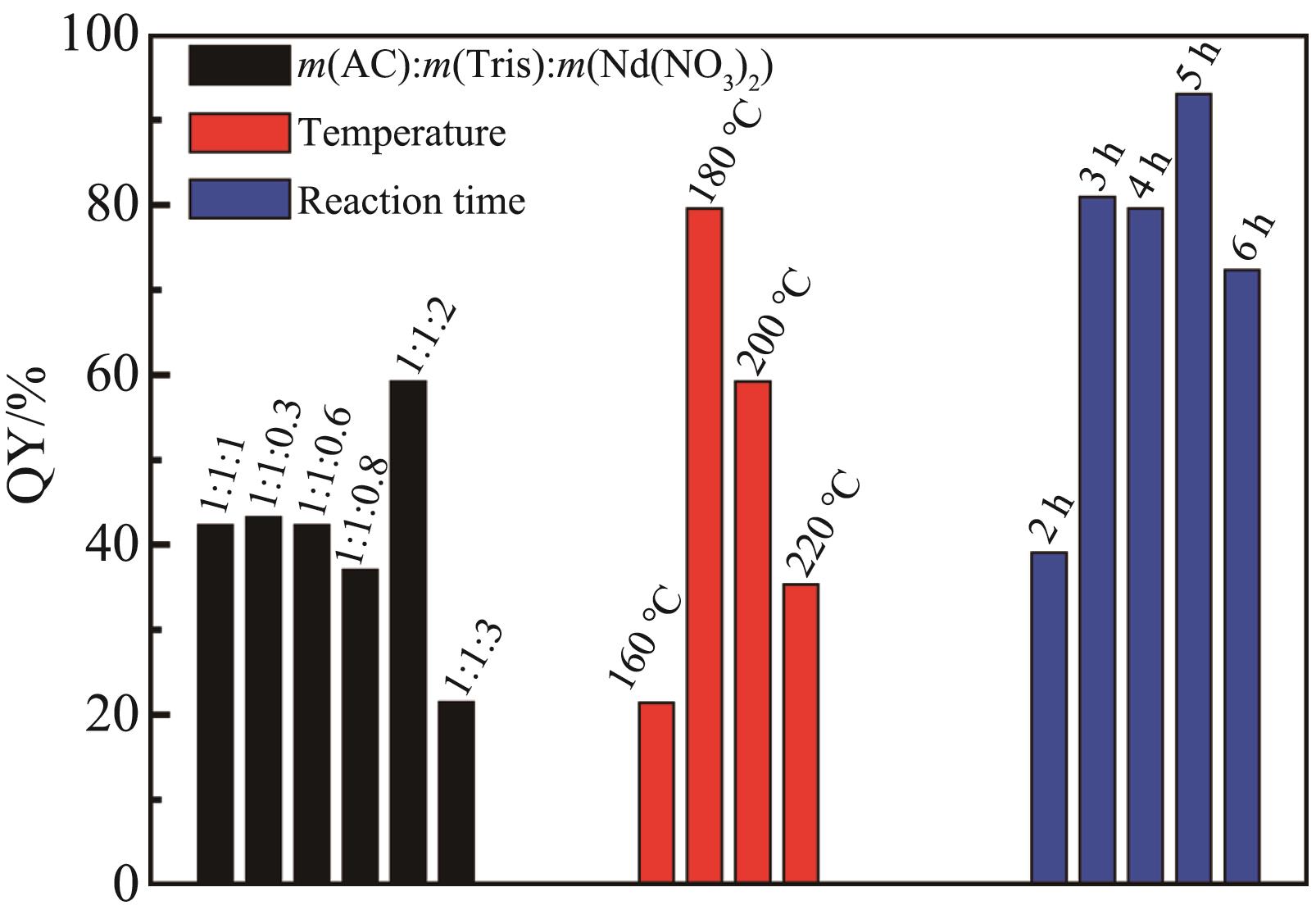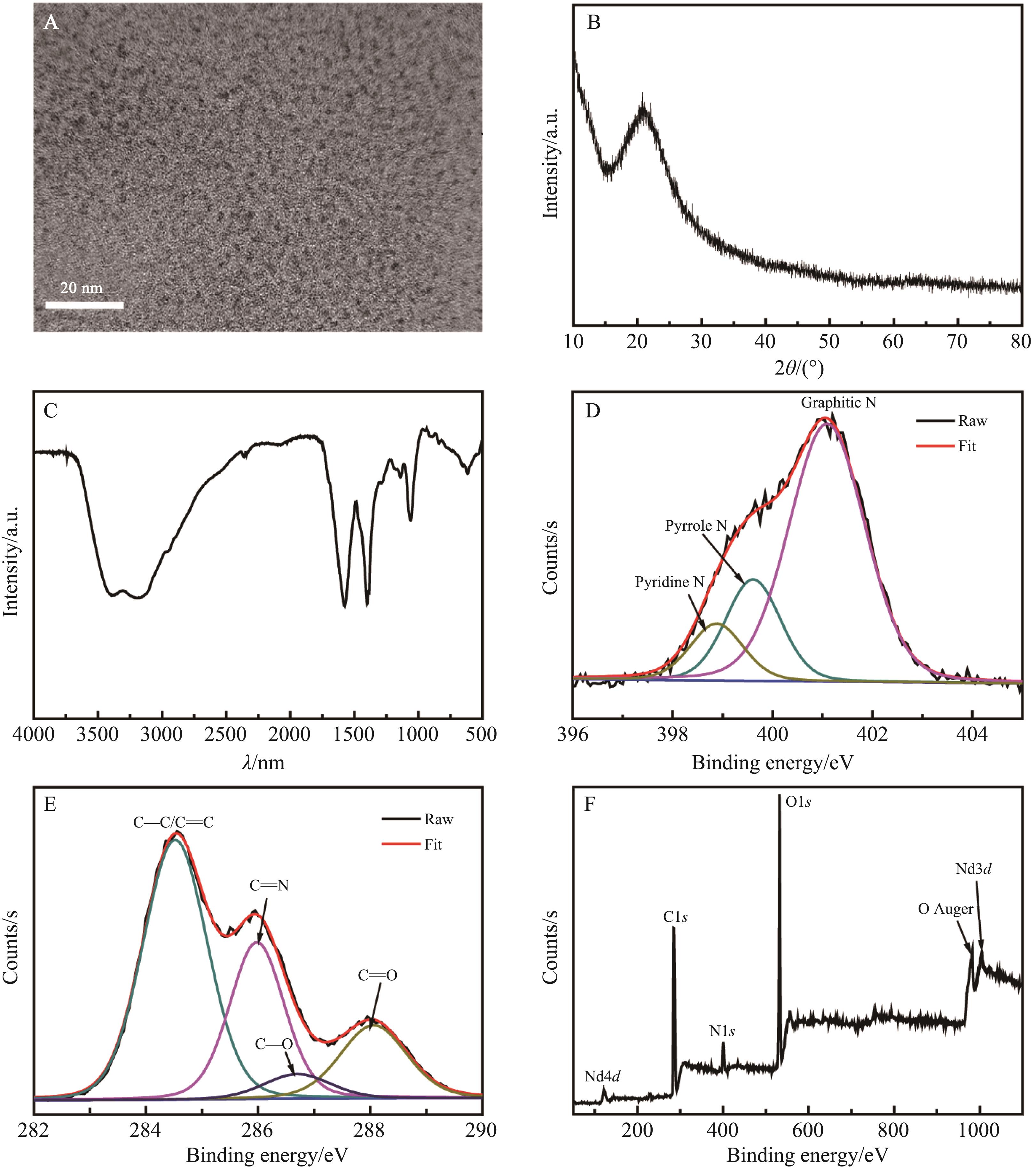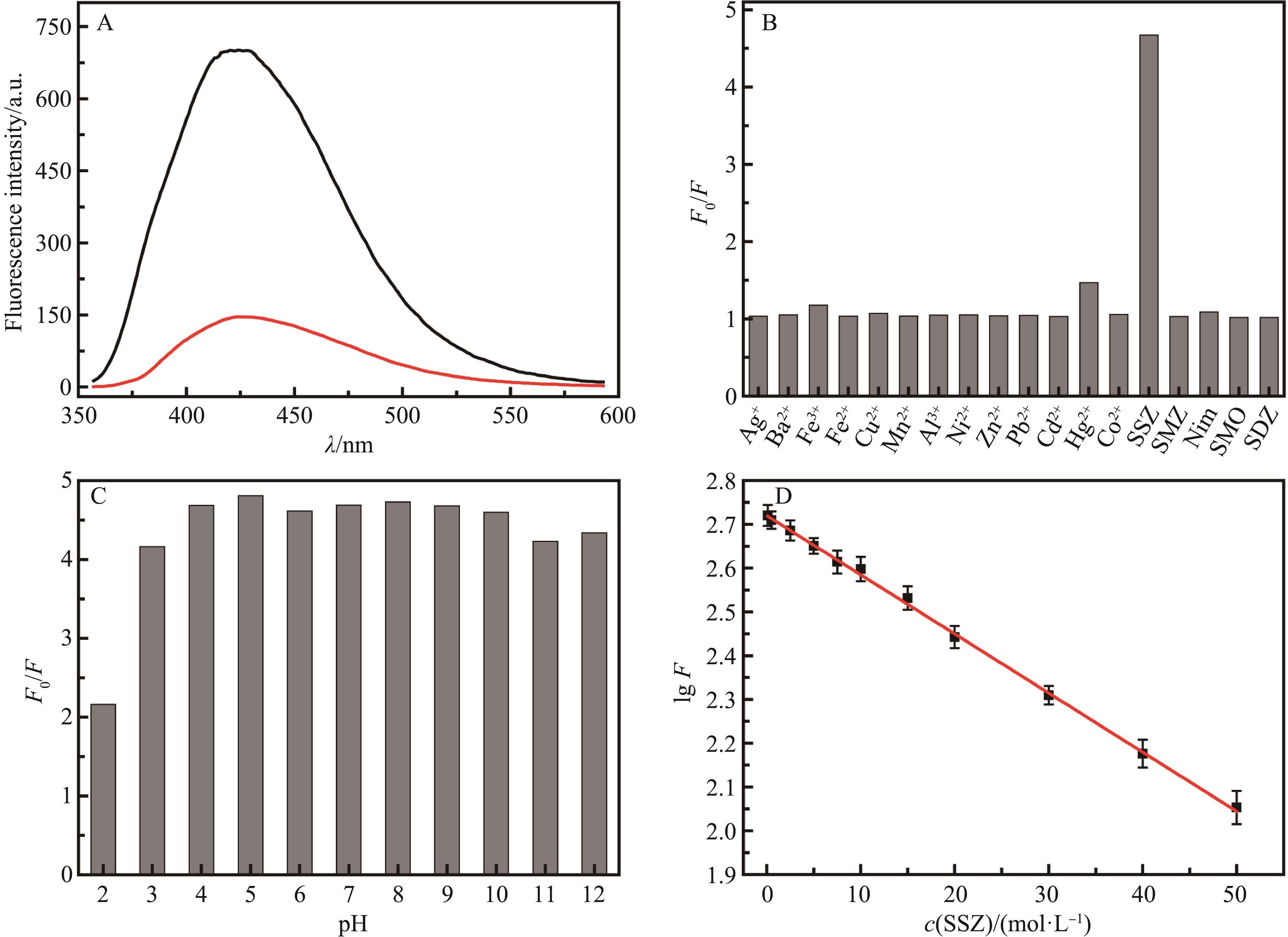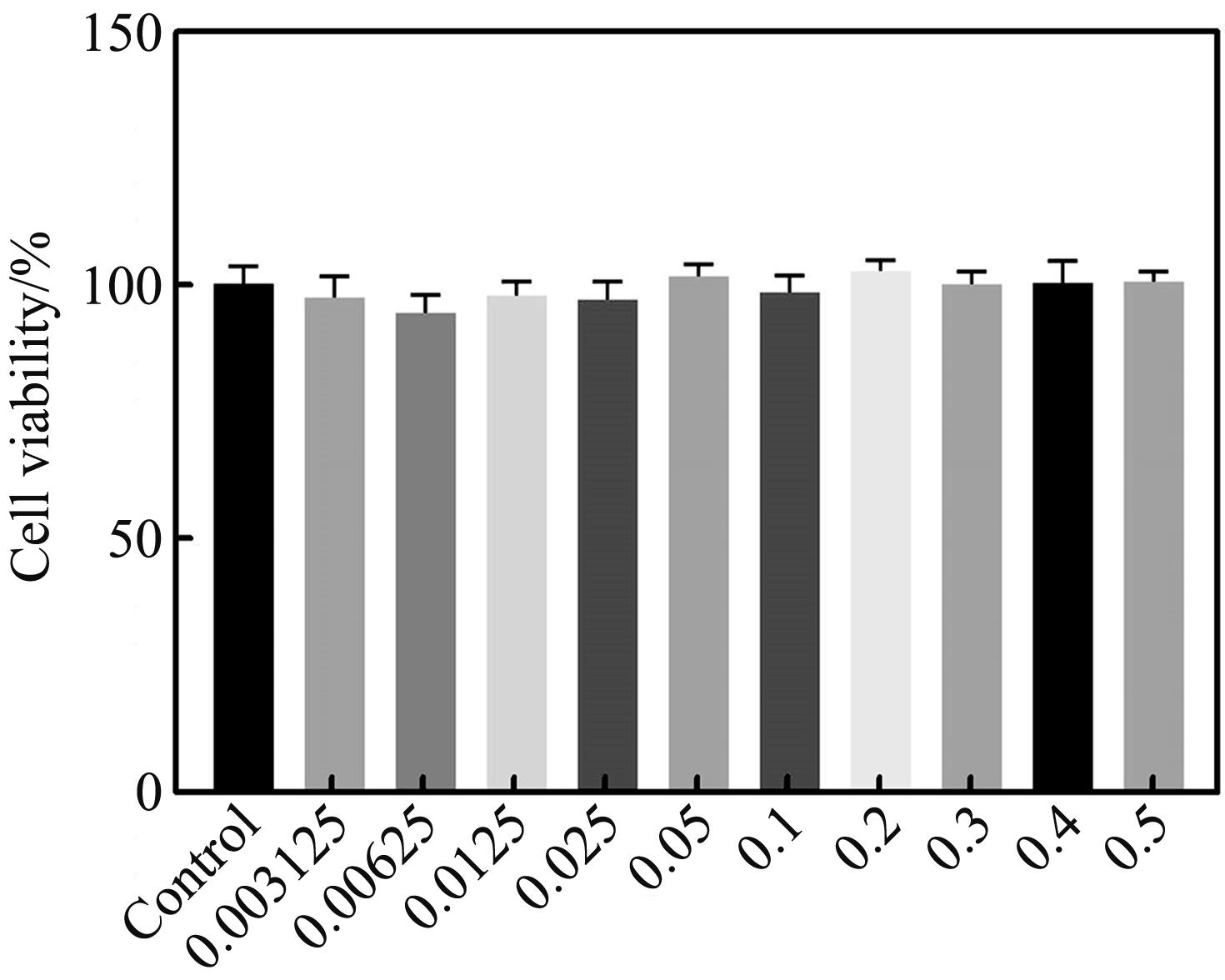
应用化学 ›› 2022, Vol. 39 ›› Issue (11): 1726-1734.DOI: 10.19894/j.issn.1000-0518.220041
高荧光量子产率钕、氮双掺杂碳点用于柳氮磺吡啶检测及Hela细胞成像
- 1.山西大同大学化学与化工学院,应用化学研究所,大同 037009
2.山西师范大学化学与材料科学学院,临汾 041004) 3. (山西大学环境科学研究所,太原 030006
Neodymium and Nitrogen Co‑doped Carbon Dots with High Fluorescence Quantum Yield for Detection of Sulfasalazine and Hela Cell Imaging
Jin-Ping SONG1, Qi MA1( ), Xiao-Min LIANG2, Jian-Peng SHANG1, Chuan DONG(
), Xiao-Min LIANG2, Jian-Peng SHANG1, Chuan DONG( )
)
- 1.College of Chemistry and Chemical Engineering,Institute of Applied Chemistry,Shanxi Datong University,Datong 037009,China
2.School of Chemistry and Material Science,Shanxi Normal University,Linfen 041004,China
3.Institute for Environmental Science,Shanxi University,Taiyuan 030006,China
摘要:
以柠檬酸氢二铵、缓血酸铵和硝酸钕为起始原料,通过水热法合成了荧光量子产率为93.05%、发蓝色荧光的钕、氮双掺杂碳点(Nd,N-CDs)。采用透射电子显微镜(TEM)、粉末X射线衍射(XRD)、红外光谱(FT-IR)及X射线光电子能谱(XPS)等技术对Nd,N-CDs的形貌及表面结构进行了详细表征,采用紫外可见吸收光谱及荧光光谱考察了其光学性质和稳定性。结果显示,药物分子柳氮磺吡啶(SSZ)能够使Nd,N-CDs的荧光显著降低,而金属离子及另外4种药物分子没有明显效果。由此,建立了一种选择性检测SSZ的荧光检测方法,线性检测范围在0.1~50 μmol/L之间,检出限低至0.05 μmol/L。机理探讨表明,荧光猝灭主要涉及动态猝灭和荧光共振能量转移两种机制。所建立的分析方法能用于测定实际药片中的SSZ含量,回收率为98.1%~104.2%。此外,Nd,N-CDs表现出很好的生物相容性,能够作为荧光探针穿透细胞壁使细胞质染色,因不会进一步穿透进入细胞核,很好的避免了对细胞的深层次破坏。
中图分类号:





